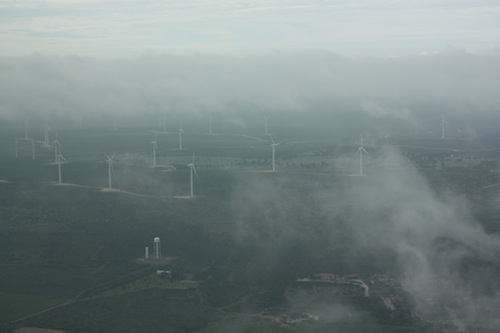I was speaking with a pilot a few months back who was not instrument rated. He was telling me of his flying experience while continually speaking fondly of scud running. He told me several stories, most of the time with a smile on his face, about scud running to his destination while staying clear of clouds. While he was talking, my mind was cycling through the numerous accident reports I’ve seen where a scud running VFR pilot has crashed into terrain or an obstacle. Needless to say, scud running is not a very good idea.
This pilot’s stories got me to thinking, how common is the practice of scud running amongst VFR only pilots? As an instructor, I always teach my private students about personal minimums and making that no-go decision when clouds are below those personal minimums. The act of scud running falls under several of those dangerous pilot mindsets, get-there-itis, invincibility, and macho-ism, to name a few.
To bring everyone on the same page, let’s define scud running. Wikipedia has a very good definition:
Scud running is a practice in which pilots lower their altitude to avoid clouds or instrument meteorological conditions (IMC). The goal of scud running is to stay clear of weather to continue flying with visual, rather than instrument, references. This practice is widely accepted to be dangerous, and has led to death in many cases from pilots flying into radio towers and high tension wires; however, even instrument-rated pilots sometimes elect to take the risk to avoid icing or embedded thunderstorms in cloud, or in situations where the minimum instrument altitudes are too high for their aircraft.
To put some numbers with that definition, a scud running VFR pilot would takeoff with a 1200-1500 foot ceiling and stay 700-1000 feet above the ground, right in the area where towers, hills, and rapidly rising terrain reside.
How do we change this mindset? Well, if someone has been scud running for years without incident, the practice becomes normal, like the pilot I mentioned above. The mindset of invincibility sets in and the practice continues. This particular pilot can also lead other pilots to adopt the same practice, encouraging them that nothing will happen to them, since we all know that our pilot peers know better than our flight instructors (insert heavy sarcasm here).
In order to change this mindset, instructors need to emphasize personal minimums from day one. This includes ceilings, visibility, and winds. For a seasoned pilot, a review of accident statistics might help the process.
Scud running is not a safe practice. If you’re a scud runner, you need to rethink your attitude. Is getting there really worth it?
Still not convinced? Read this pilot’s experience from AOPA.

